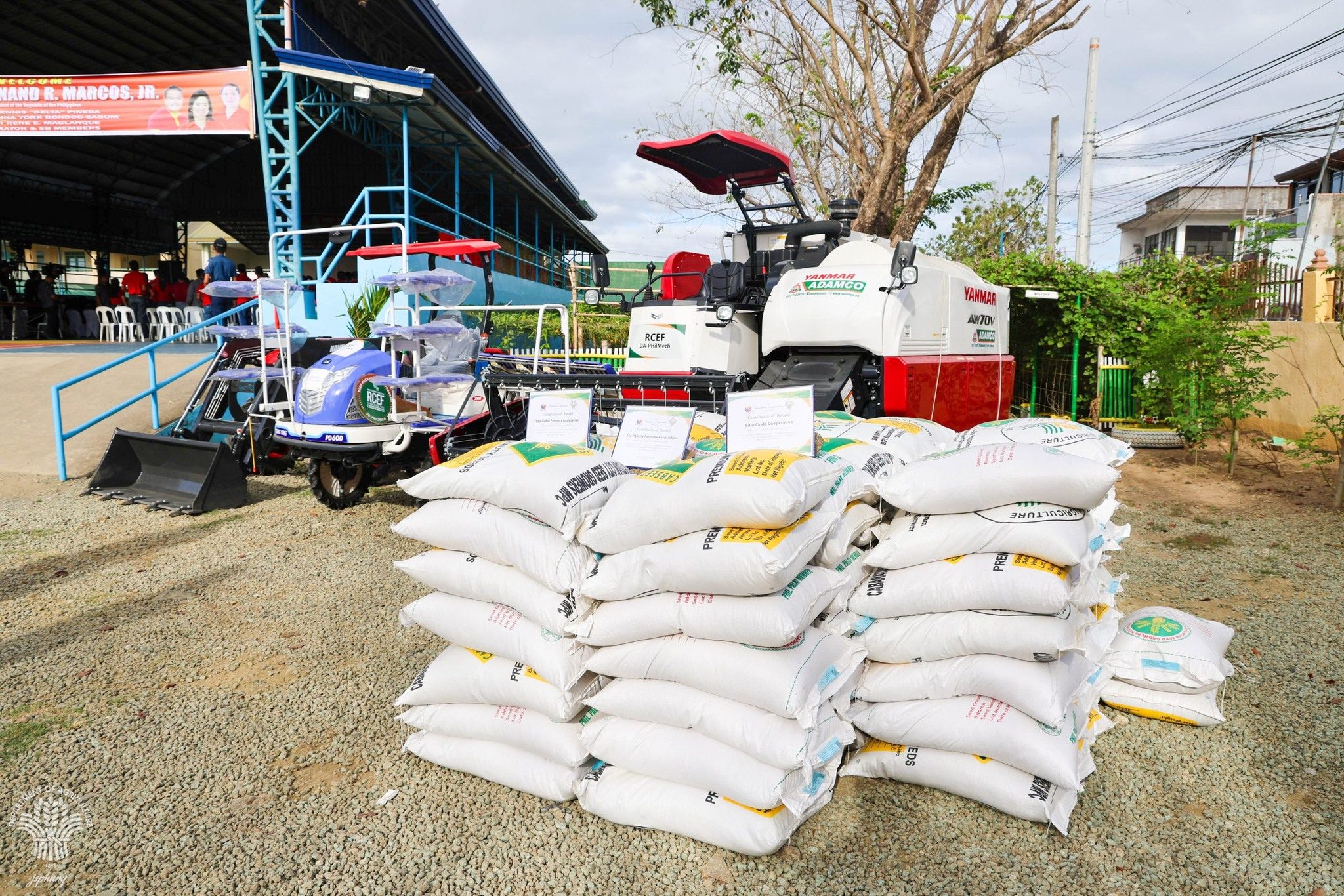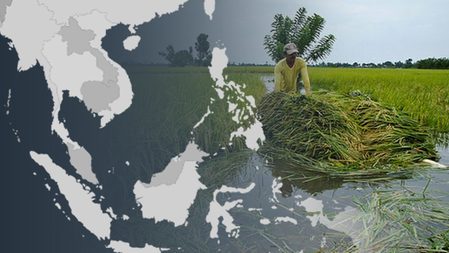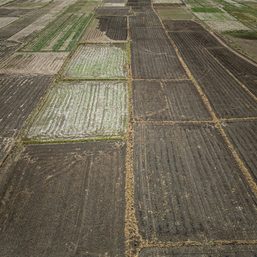SUMMARY
This is AI generated summarization, which may have errors. For context, always refer to the full article.

MANILA, Philippines – The Philippine government continues to ramp up efforts in rice industry development amid an El Niño year and four years before its target to reach rice self-sufficiency by 2028.
“Ang totoo po niyan, confident po akong magsasabi sa inyo na ‘yung production area ng NIA [National Irrigation Administration] ngayong El Niño ay tataas pa po ang production namin ng palay,” said irrigation chief Eduardo Guillen in a radio interview on Sunday, February 4.
(The truth there is, I can confidently tell you that NIA’s production area this El Niño will see higher production of palay.)
Guillen attributed this optimism to the preparations the government has been making so far.
In the same interview, the National Irrigation Administration (NIA) chief said the target of 97.4% rice self-sufficiency is achievable. President Ferdinand Marcos Jr. said last year this would be enough to feed all Filipinos.
El Niño is expected to bring droughts and dry spells that will affect water supply, agriculture, and food security. (READ: Is the Philippines prepared for El Niño?)
Based on assessments from regional offices, the Department of Agriculture (DA) estimated in its latest bulletin released January 30 that damage and losses have amounted to P109.44 million, with 2,602 farmers are affected.
“Most of the damage and losses incurred on rice are at reproductive stages,” the bulletin read.
Supporting palay producers
On top of concerns among Filipinos during an El Niño would be food supply, especially rice.
Recently, several agencies, led by the DA, welcomed February with efforts to revitalize the rice industry.
For 2024, the government has set aside P31 billion for the National Rice Program.
On February 3, the President, together with DA chief Francisco Tiu Laurel Jr., visited farmers and cooperatives in Candaba, Pampanga to distribute more than P20 million worth of farm inputs.
The goal of the visit was “to sustain the push for agricultural modernization and increased food production in the face of El Niño,” according to a statement released by the DA. Laurel said they have been working overtime to realize this.
The DA chief has also mentioned installing solar irrigation systems in select areas, in a previous Malacañang briefing. This is to ensure water supply for farmers during dry spells.
In their visit to Candaba, Marcos said the government plans to install these systems “to an additional 180,000 hectares of rice land which should translate to 1.2 million metric tons (MMT) of palay.”
A day before, the DA inked a memorandum of understanding with the NIA and the Department of Trade and Industry to develop the Integrated Rice Supply Chain Development Program.
The program will develop an online market platform that brings together buyers and sellers in the rice industry. It aims to make the supply chain more efficient and increase income of rice farmers.
Philippines still the biggest importer
Palay may be what comes to mind when one thinks of a Filipino farmer, and rice is the staple food in all Filipino households, but the country remains unable to produce enough rice for its own population.
The Philippines is projected to retain its spot as world’s top rice importer, according to the latest forecast by the US Department of Agriculture (USDA).
The USDA said the Philippines is set to take in a record 3.8 million tons of rice. The Philippines is followed by China, Indonesia, the European Union, and Iraq.
While the government seems to be doubling down on efforts to develop its rice industry, it is also making sure rice supply from exporters is steady. Last year, the Philippines secured the highest allocation of non-basmati white rice from India following India’s export ban.
In his visit to Hanoi, Vietnam, just a week ago, Marcos finalized an agreement on rice trade.
As of December last year, the Philippines’ rice inventory was at 1.9 million metric tons, a 25.2 percent decrease from the previous year’s 2.53 MMT.

Needed: Sustained support for agriculture
However, it’s still a long road to rice self-sufficiency, even with the additional 1.2 MMT of palay if the government expands solar irrigation systems, according to a leader of a farmers’ organization.
“To reach self-sufficiency, we will have to produce an additional 3.5 million tons of palay per year,” Raul Montemayor, national manager of the Federation of Free Farmers Cooperatives, told Rappler.
“This will require around 850,000 hectares in addition to the 4.8 million hectares that are currently harvested in a year.”
Doing this would also need massive funding from the government, not just piecemeal distribution of farm inputs and equipment.
Montemayor said support should be sustained as self-sufficiency is a “a moving target” because of growth in demand and population.
He added that self-sufficiency is not the only issue that must be addressed; there’s also the problem of local rice being more expensive than imported rice.
Just because there’s enough rice to feed the population doesn’t mean cheaper imports will not enter the country anymore, Montemayor said. Farmers can still find themselves at a disadvantage.
“Domestic palay prices will drop to achieve parity with imported rice, and this could discourage farmers from sustaining their production,” he added.
‘Focus on small-scale farmers’
At the core of these moves to to improve food production and ensure supply should be small-scale farmers.
Majority of the Philippines’ rice production still comes from small producers, Lionel Dabbadie of the Food and Agriculture Organization of the United Nations, told Rappler.
“These small holders must be empowered to ensure they receive a fair price for their work and products,” said Dabbadie.
Dabbadie said the El Niño event in 2018-2019 impacted 247,610 farmers. This El Niño year could set them back further.
“Recovery for small-scale food producers often spans years, with many sinking deeper into debt and a cycle of poverty due to diminished productivity, which can have impact on the long-term,” he said.
Agriculture experts have also urged the government to make Philippine agriculture attractive to the business community, the sector which has the resources to modernize the industry. – Rappler.com
Add a comment
How does this make you feel?




![[ANALYSIS] How one company boosts farmer productivity inside the farm gate](https://www.rappler.com/tachyon/2024/06/bioprime-farmgate-farmer-productivity-boost.jpg?resize=257%2C257&crop=465px%2C0px%2C1080px%2C1080px)














There are no comments yet. Add your comment to start the conversation.